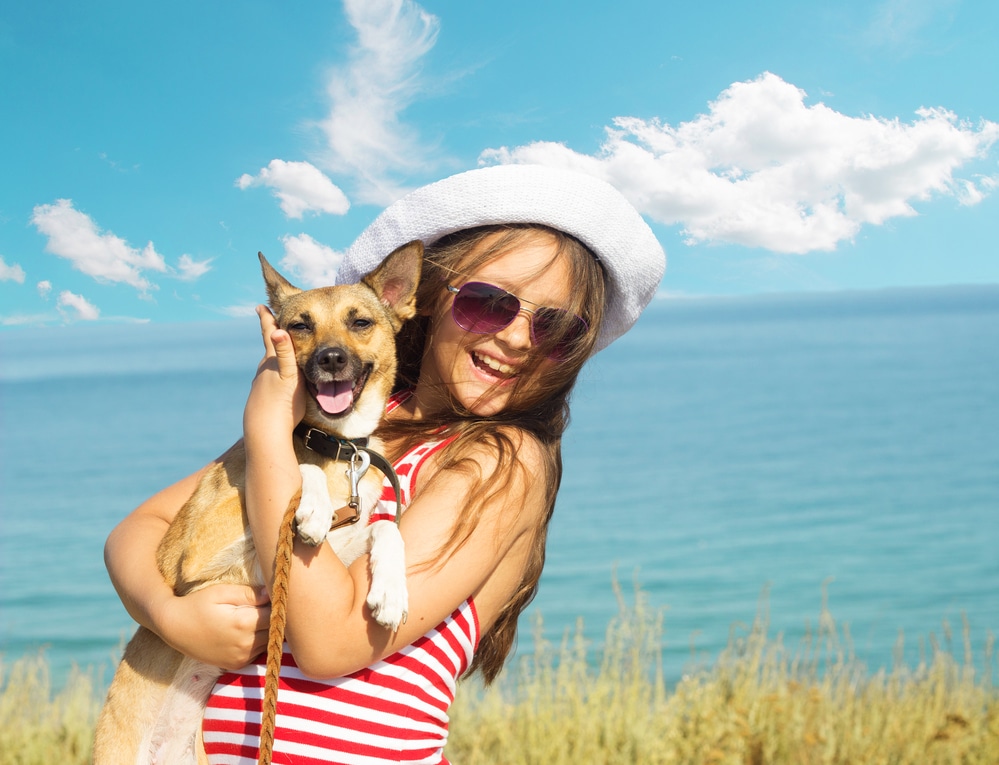
When it comes to looking after your dog in the summer, protecting them from sunburn probably isn’t something you would normally think of as a summer danger. The usual suspects are keeping them cool with plenty of shade and water, but believe it or not, dogs can get sunburn just like humans, and in extreme cases, too much exposure to the sun can cause skin cancer.
While all dogs can get sunburn on delicate areas with little or no fur, such as their noses, ears, around the mouth and underbelly, certain dogs are more susceptible to sunburn than others. Hairless dogs or those with white or pale-coloured fur, such as Golden Labradors, Golden Retrievers, Pitbulls, Dalmatians, Greyhounds, Chinese Crested Dogs and Boxers, are usually at a higher risk of getting sunburnt.
Symptoms of sunburn
Signs that your dog has suffered sunburn are very similar to those of humans. You will possibly spot areas of sunburned skin on his nose, tip of his tail, ears or belly, but other things to look out for include:
- Burnt red skin that is very sensitive when touched
- Cracked dry skin
- Edges of the ears curling
- The dog will whimper and scratch at the sunburnt areas
- Your dog will turn away so as not to be touched
- A slight fever
Preventing your dog from getting sunburn is key
Naturally, you can’t keep your dog locked up indoors all summer long, but taking a few preventative measures will help reduce the chances of your dog getting sunburnt, thus reducing the risk of developing anything more sinister like sunstroke or skin cancer.
You should consider the time of day you walk your dog. Avoid dog walks during the hottest part of the day when the sun is at its strongest. Instead, try to take your dog out for early morning or evening walks when it’s much cooler. Although you should try to keep your dog indoors during the heat of the day, make sure that they are not lying in the direct sunlight streaming in through the windows, which can also allow penetrating UV rays.
Something to also remember when walking during the day is that dogs can burn their paws on hot pavements
Sun protection
You can safeguard your pup, just as you would protect yourself, by applying sunscreen onto the exposed areas, such as the nose, ears and underbelly or even opt for some sun protection clothing. Never use human sunscreen on your dog, as the perfumes and artificial ingredients can irritate their skin. It is important to avoid any sunscreen that contains Zinc Oxide, which is highly toxic to pets. Look for an all-natural canine product, and remember when you apply the cream or lotion that, it’s highly probably your dog will attempt to lick it off. For this reason, the more natural product, the better to prevent it from making your dog sick.
You can use a home remedy to treat minor, superficial sunburn. Try a cold compress on the area, or cool your dog down with a bath. Vitamin E oil rubbed onto the affected area will soothe and aid healing, or you could make an oatmeal soak and apply it to the skin.
Treating sunburn
If your dog does get sunburnt, it’s essential to recognise the signs and severity as they may need to see a vet. If his skin looks leathery, white or is bright red, they have likely had too much sun.
However, you should be aware of three different types of sunburn in dogs – superficial, deep and full-thickness burn. The first affects just the top layer of skin and can usually be treated at home with Aloe Vera gel or topical cream from your Vet to cool the area. The latter two will require more serious Vet’s treatment and can mean hospitalisation, as the sunburn has penetrated below several or potentially all, layers of the skin. This can be very painful for your dog and cause lasting damage to the tissue.
To ensure your dog stays cool and sunburn free this summer, make sure you’re sensible about walking times and keeping your dog covered up, and always make sure they stay well hydrated.
If you think your dog has sunburn, contact your local Vet as soon as possible.
You may also be interested in our article on Nice weather – dog walking advice and what to wear in summer.

